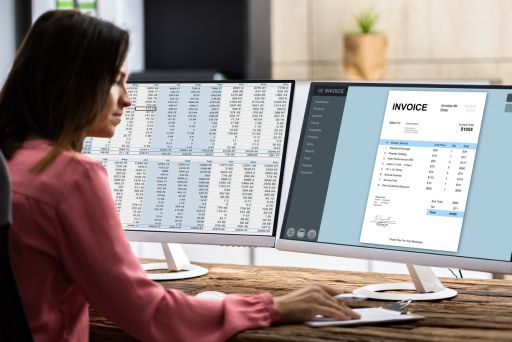Starting a small business demands meticulous planning and strategic decision-making. As an entrepreneur, you’re often juggling various roles to ensure the success of your venture. Financial management is a critical aspect that can significantly impact your business’s growth trajectory. One key question many small business owners like you face is do I need an accountant for my small business to manage our finances effectively

Understanding the Role of an Accountant for Small Businesses
Importance of Accounting for Small Business Owners
Small business owners often handle multiple responsibilities simultaneously. From overseeing daily operations to managing finances, their plate is always full. Accounting plays a pivotal role in maintaining the financial health of any business, irrespective of its size. Financial statements, tax filings, and cash flow management are essential components that contribute to informed decision-making.
Business Finances Management
For any small business owner, managing business finances is pivotal for sustainability and growth. Accounting serves as the backbone for this aspect. It involves meticulous recording, organizing, and interpreting financial data. With a robust accounting system in place, owners gain insights into their company’s financial health, allowing informed decision-making.
Business Taxes and Compliance
Navigating business taxes can be complex. Proper accounting ensures adherence to tax laws, timely filing of returns, and optimized tax planning. This is crucial to minimize tax liabilities legally. An accountant assists in identifying deductions, credits, and compliance requirements specific to your business, ultimately saving you money and mitigating potential penalties.
Tracking Financial Performance of Own Business
Being a small business owner necessitates keeping a close eye on the financial performance of your venture. Accounting facilitates the creation of financial statements, including profit and loss statements and balance sheets. These reports offer a snapshot of your business’s performance, aiding in identifying areas of improvement or potential concerns.
Implementing an Efficient Accounting System
Establishing an effective accounting system tailored to your business needs is pivotal. This system ensures accuracy in recording transactions, monitoring expenses, tracking revenue, and maintaining financial records systematically. It lays the groundwork for reliable financial reporting and analysis.
Empowering Small Business Owners
Having a clear understanding of your business’s financial standing empowers you as a small business owner. It allows for better business planning, budgeting, and forecasting. With accurate financial information at your disposal, you can make strategic decisions confidently, leading your business towards success.
Do Small Businesses Need Accounting Services?
Many small business owners contemplate whether investing in accounting services is crucial or if relying solely on accounting software suffices. While accounting software streamlines certain processes, it might not cover the nuances and complexities that a certified public accountant (CPA) could handle. A CPA offers specialized tax knowledge and a comprehensive understanding of financial decisions crucial for a business’s success.
Accounting Tasks and the Need for Professional Assistance
Handling tax planning, quarterly financial reports, and ensuring regulatory compliance demands precision and in-depth knowledge. A skilled accountant brings specialized expertise to the table, aiding in accurate tax filings and managing payroll taxes effectively.

The Benefits of Hiring a Professional Accountant
For small business owners, time is a valuable commodity. Entrusting accounting tasks to a qualified professional frees up time, enabling owners to focus on crucial aspects like business planning and business growth strategies. Furthermore, a knowledgeable accountant can provide valuable insights and advice to make financial decisions that align with the company’s goals.
Expert Financial Guidance
A seasoned accountant brings expertise and a deep understanding of financial matters to the table. They offer invaluable advice and strategic insights tailored to your business’s unique needs. This guidance extends beyond mere number-crunching; it encompasses financial planning, tax optimization, and growth strategies.
Accuracy and Compliance
Accountants ensure accuracy in financial reporting and compliance with various regulations and tax laws. They meticulously handle financial statements, tax filings, and other accounting tasks, minimizing the risk of errors or non-compliance that could result in penalties or legal issues.
Time and Resource Savings
Outsourcing accounting tasks to a professional frees up valuable time for business owners. Instead of getting entangled in complex accounting tasks, they can focus on core business operations, customer relations, and strategic planning to drive business growth.
Cost-Efficiency and Saving Money
While hiring an accountant might seem like an added expense initially, their expertise often leads to cost savings in the long run. They optimize tax strategies, identify potential areas of cost reduction, and help in maximizing profits, ultimately outweighing their service costs.
Strategic Decision-Making Support
Accountants don’t just manage numbers; they interpret financial data to provide insights crucial for decision-making. They aid in identifying financial trends, forecasting, and creating financial projections, empowering business owners to make informed and strategic decisions.
Enhanced Financial Analysis
Professional accountants conduct in-depth financial analysis beyond the capabilities of accounting software. They provide a comprehensive understanding of your business’s financial health, enabling proactive measures to manage cash flow, analyze profitability, and forecast future results.
Customized Solutions
An experienced accountant tailors their services to suit your business’s specific needs. They adapt to your industry, company size, and goals, providing personalized solutions and advice aligned with your objectives.
Accounting Software vs. Hiring an Accountant
Accounting Software for Small Businesses
Accounting software has revolutionized how small businesses manage their finances. With user-friendly interfaces and various functionalities, these tools simplify tasks such as financial reports, customer payments, and maintaining the company’s accounts. However, they might lack the personalized touch and specialized knowledge offered by a dedicated accountant.
Advantages of Hiring a Small Business Accountant
While accounting software automates certain processes, it cannot replace the critical thinking and analysis provided by a professional accountant. Hiring an accountant ensures comprehensive financial analysis, accurate tax planning, and proactive measures to manage tax obligations efficiently.
Considering the Cost-Effectiveness
Small business owners often weigh the costs involved in hiring a full-time accountant versus utilizing accounting software. While a full-time accountant might seem expensive initially, the expertise they bring can save money in the long run by optimizing tax strategies and avoiding costly mistakes.
Vyde: Your Own Accounting Department All Rolled Into One
Embarking on a journey as a small business owner entails numerous responsibilities, and one crucial aspect is managing your finances effectively. Hiring an accountant isn’t just an option; it’s a strategic move towards ensuring the financial health and success of your business.
Many small business owners often have concerns when it comes to hiring an accountant. Worries may revolve around the perceived cost, finding the right fit for their business, and whether the accountant will truly understand their unique needs and challenges.
They might also worry about the transition process, integrating the accountant into their business operations, and whether the accountant will provide the personalized attention and expertise they require.

Benefits of Hiring Vyde as Your Accountant
Vyde stands out as an exceptional choice for small business owners seeking comprehensive accounting services. Our team offers more than just traditional accounting; we provide a full spectrum of financial support and expertise.
Vyde acts as your dedicated accounting partner, functioning as your personalized accounting department. We understand the intricacies of small businesses, offering tailored solutions to meet your specific needs.
Incorporating Vyde as your accountant isn’t just a decision; it’s an investment in the future of your business. Let us handle the complexities of accounting, providing you with peace of mind and the freedom to focus on what you do best – growing your business.
Make the smart choice today. Contact Vyde and experience the difference a dedicated accounting partner can make for your small business’s success.
Frequently Asked Questions
1. Do I need to hire an accountant if I’m using accounting software for my small business?
While accounting software can streamline processes, it might not cover complexities that a professional accountant can handle. An accountant brings expertise in financial analysis, tax planning, and personalized guidance, complementing the software’s functionalities.
2. What are the signs indicating that my small business requires the expertise of an accountant?
Consider hiring an accountant if you face challenges in managing tax filings, financial analysis, or lack the time to focus on strategic business decisions. An accountant’s expertise can streamline these processes, offering valuable insights for growth.
3. How can hiring an accountant benefit my small business’s financial health?
Hiring an accountant ensures accuracy in financial reporting, compliance with tax laws, and provides strategic financial advice. Their expertise empowers better decision-making, cost optimization, and improved financial stability.
4. What services can a professional accountant offer beyond bookkeeping?
Professional accountants offer comprehensive services such as tax planning, financial analysis, regulatory compliance, strategic financial guidance, and personalized solutions tailored to your business needs.
5. What factors should I consider when choosing an accountant for my small business?
Consider their expertise, industry knowledge, qualifications, experience, and ability to provide personalized attention. Seek an accountant who understands your business goals and can offer strategic financial guidance.





























